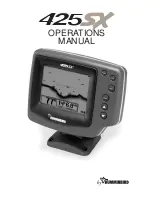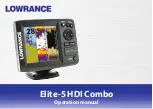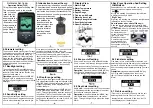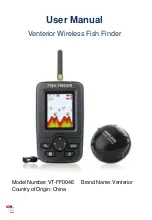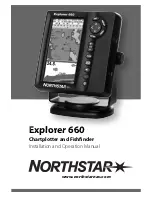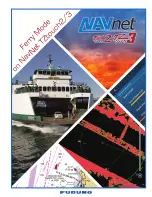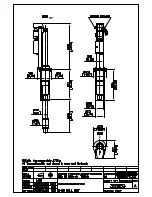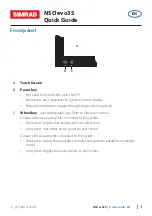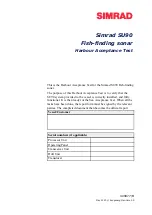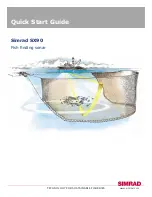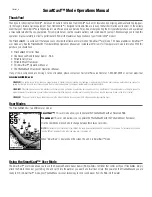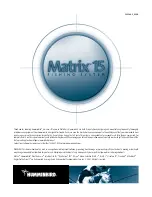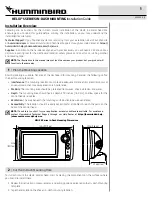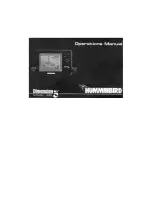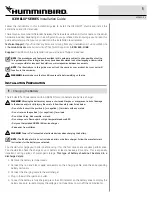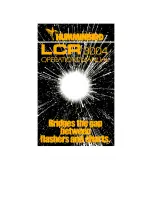
speed and movement of the fish greatly affect
the shape of the arch. When moving slowly, a
fish creates an elongated arch. With the boat
moving fast the arch appears shorter. A partial
arch forms when the fish does not move through
the entire cone angle.
The
425SX
displays structure such as submerged grass, brush, trees and
wrecks on the bottom. Structure can be distinguished by comparing the
area just above and below the main bottom return. Usually structure shows
as areas of dark to light gray on top of a dark bottom contour. The
appearance of structure is greatly affected by boat speed and direction; to
repeat the same image it is often necessary to travel the same speed and
direction over the location where the structure was originally located.
The
425SX
is also capable of showing layers of water having different
temperatures. These temperature differences, called thermoclines, appear at
different depths, depending on current conditions. A thermocline typically
appears as a continuous band of light gray moving across the display at the
same depth. Thermoclines always appear above the bottom.
It is important to remember that sonar cannot distinguish between a fish
and some other object suspended in the water. Regardless of the object the
sonar detects, each could be drawn as an arch.
Fish ID.
The
425SX
uses
advanced signal processing
to further evaluate any
sonar return between the
surface and the bottom. For
instance, a small school of
bait fish usually appears as a
dense cluster of individual
dots. If the return meets
certain additional criteria, a
fish symbol will be assigned.
There are three different size
fish symbols used to indicate
11
USING THE
425SX
WHAT YOU SEE ON SCREEN
ID+ Fish Depth
Fish Arch Diagram

